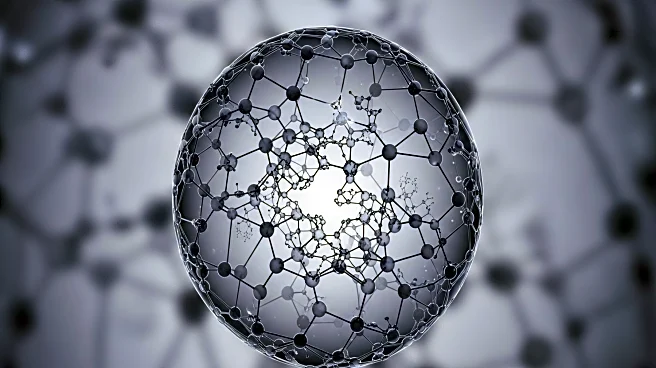What is the story about?
What's Happening?
A recent study published in Nature investigates the role of defect-modulated oxygen adsorption and Z-scheme charge transfer in enhancing the selectivity and efficiency of photocatalytic hydrogen peroxide (H2O2) production. The research focuses on a composite material, U6N@ZIS, which was synthesized to improve the photocatalytic process. The study highlights the importance of the Pauling-type O2 adsorption configuration, which promotes the formation of reactive intermediates conducive to H2O2 production. The presence of sulfur vacancies in the material was found to modulate the O2 adsorption, favoring the desired reaction pathway. The research demonstrates that U6N@ZIS achieves significantly higher H2O2 production compared to its individual components, U6N and ZIS, due to enhanced charge separation and transfer facilitated by the Z-scheme heterojunction.
Why It's Important?
The findings of this study have significant implications for the field of photocatalysis, particularly in the context of sustainable chemical production. Hydrogen peroxide is a valuable chemical with applications in disinfection, bleaching, and as a green oxidant in various industrial processes. The ability to produce H2O2 efficiently using sunlight and water could reduce reliance on traditional, energy-intensive production methods, thereby lowering environmental impact. The research also contributes to the broader understanding of how material defects and electronic structures can be engineered to optimize photocatalytic reactions. This could lead to advancements in the development of other photocatalytic systems for environmental and energy applications.
What's Next?
Future research may focus on scaling up the production of U6N@ZIS and optimizing its synthesis for industrial applications. Additionally, exploring the integration of this material into practical photocatalytic systems for large-scale H2O2 production could be a key area of development. Researchers may also investigate the potential of similar defect-engineered materials for other photocatalytic processes, such as water splitting or CO2 reduction, to further expand the applications of this technology.
Beyond the Headlines
The study underscores the potential of defect engineering in materials science, highlighting how subtle changes in material composition and structure can lead to significant improvements in chemical processes. This approach could inspire new strategies for designing advanced materials with tailored properties for a wide range of applications, from renewable energy to environmental remediation.
AI Generated Content
Do you find this article useful?
















